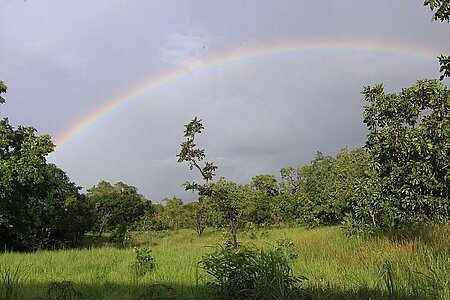About the Park
Comoé National Park

The Comoé National Park is a Biosphere Reserve and UNESCO World Heritage Site in the Zanzan District, North-eastern Côte d'Ivoire. It is the largest protected area in West Africa, with an area of 11,500 km2, and ranges from the humid Guinea savanna to the dry Sudanian zone.
This steep climatic north-south gradient allows the park to harbour a multitude of habitats with a remarkable diversity of life. Some animal and plant species even find their last sanctuary in some of the different savanna types, gallery forests, riparian grasslands, rock outcrops or forest islands. The park was initially added as a World Heritage Site due to the diversity of plant life present around the Comoé River, including pristine patches of tropical rain forest that are usually only found further south.
As a well-eroded plain between two large rivers, the land in the area is home to relatively infertile soils and a moisture regime suitable to a richer biodiversity than surrounding areas. In 2003 it was added to the list of World Heritage Sites in Danger due to poaching, absence of management, overgrazing of the park by cattle, problems that intensified after the outbreak of the First Ivorian Civil War.








